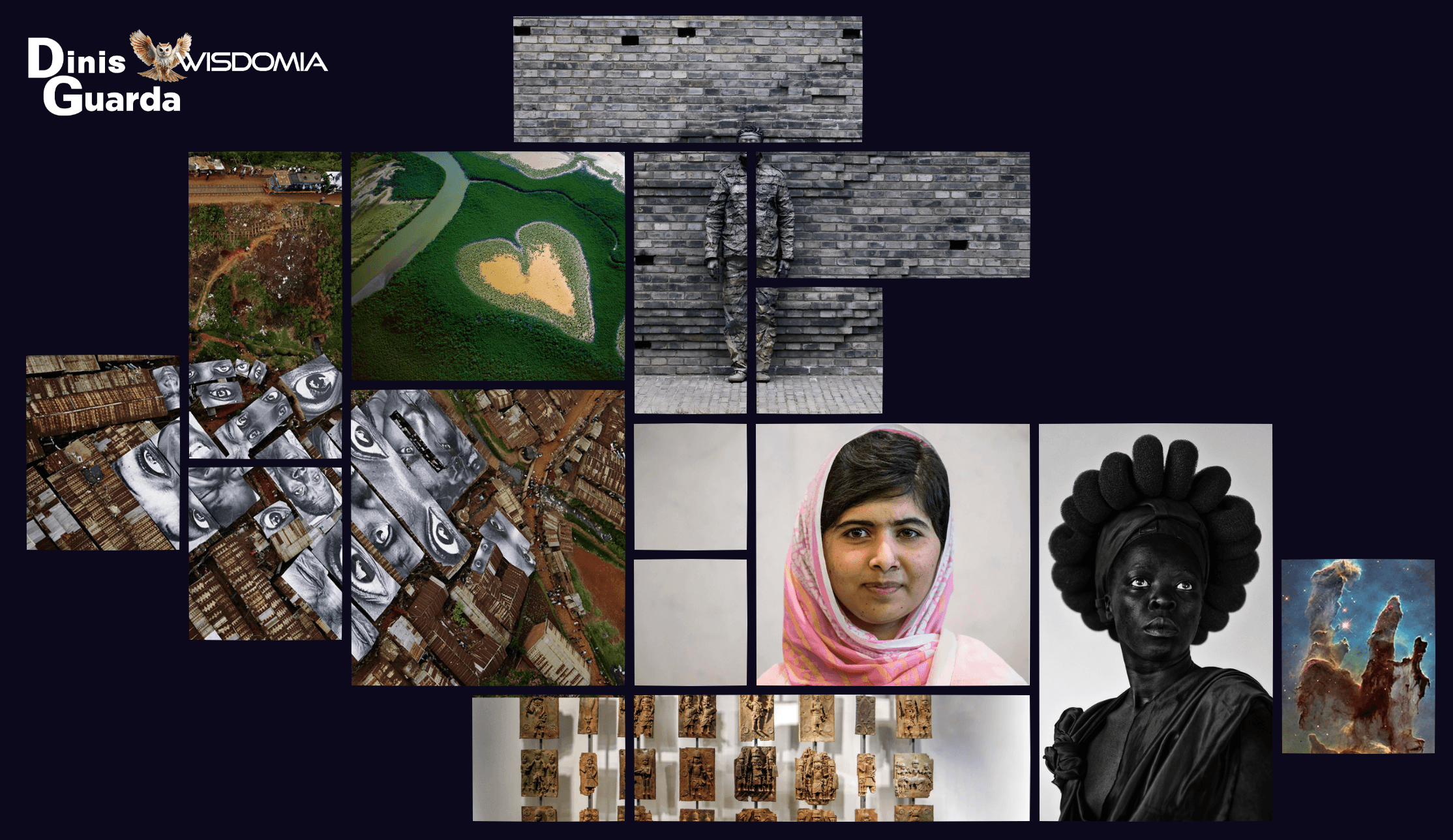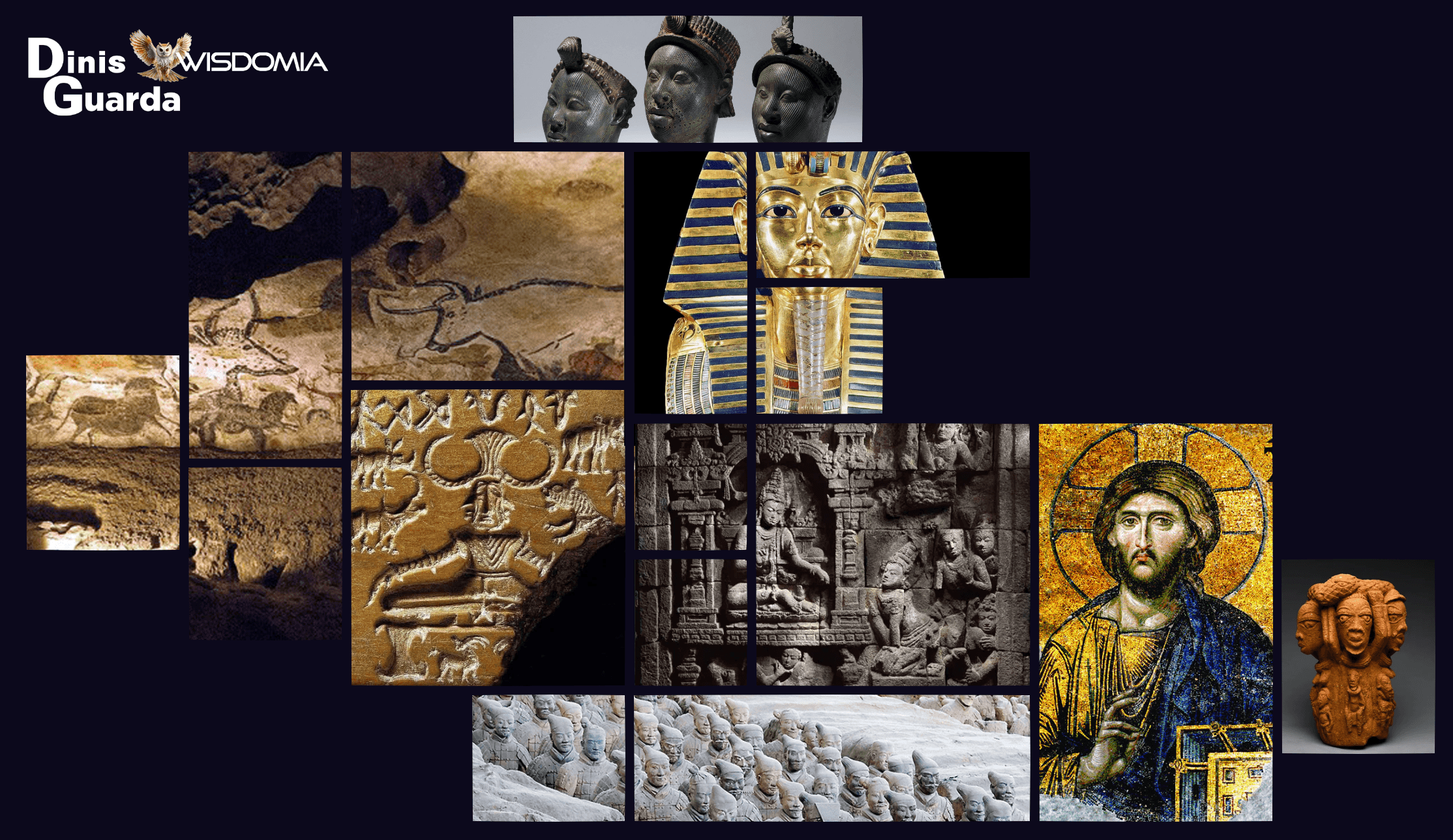Who was the first person on earth?
Sara Srifi
Mon Aug 18 2025

From evolutionary science to cultural myths and religious traditions, the question of who the first person on Earth was sparks endless curiosity and debate. Explore the many perspectives that shape our understanding of human origins.
The question of human origins has long fascinated scientists, theologians, and the general public alike. For centuries, this complex inquiry has sparked intense debate and exploration.

From a scientific perspective, the study of early humans and their evolution provides valuable insights into our shared history. Meanwhile, religious and cultural beliefs offer additional perspectives on the origin of humanity, creating a rich tapestry of information.
By examining the various viewpoints on first human existence, we can gain a deeper understanding of our collective past and the diverse narratives that shape our understanding of it.
Key Takeaways
- The study of human origins is a multidisciplinary field.
- Scientific theories and religious beliefs both contribute to our understanding.
- The concept of the "first human" is complex and multifaceted.
- Different cultures have unique narratives about human origins.
- Understanding human origins can provide insights into our shared human history.
The Scientific Perspective on Human Origins
The scientific community's understanding of human origins is rooted in the study of evolution and paleoanthropology. By examining fossil records, genetic data, and other evidence, researchers have constructed a comprehensive narrative of human evolution.
The Evolution of Early Hominids
The journey of human evolution began with the emergence of early hominids. These ancient ancestors were characterized by their bipedalism, a trait that distinguished them from other primates.
Australopithecus and Early Homo Species
Australopithecus species, such as Australopithecus afarensis, were among the earliest known hominids, exhibiting a mix of primitive and advanced traits. Early Homo species, like Homo habilis, showed further advancements, including larger brain sizes.
Homo Erectus and the First Use of Fire
The appearance of Homo erectus marked a significant milestone, as they were the first hominids to control and use fire, a discovery that had profound implications for their survival and development.
Key Fossil Discoveries That Changed Our Understanding
Several key fossil discoveries have reshaped our understanding of human evolution. Notable finds include:
- The discovery of "Lucy," an Australopithecus afarensis fossil, which provided insights into early hominid anatomy and behavior.
- The fossils found in the Olduvai Gorge, which have contributed significantly to our knowledge of early Homo species.
Neanderthals and Other Human Relatives
In addition to Homo sapiens, other human relatives, such as Neanderthals and Denisovans, once inhabited the Earth. The study of these species has revealed a complex history of human migration, interaction, and interbreeding.
Understanding the scientific perspective on human origins not only sheds light on our past but also informs our understanding of what it means to be human.
Who was the first person on earth? The Genetic Evidence
By examining genetic data, researchers have made significant discoveries about human lineage, particularly through the concepts of Mitochondrial Eve and Y-Chromosomal Adam. Genetic evidence provides a unique window into human ancestry, helping scientists understand the origins of our species.
The Concept of Mitochondrial Eve
Mitochondrial Eve refers to the most recent common ancestor of all living humans through the maternal line. This concept is based on the analysis of mitochondrial DNA, which is passed down from mother to child. Studies have shown that Mitochondrial Eve lived in Africa approximately 200,000 years ago.
Y-Chromosomal Adam and Paternal Lineage
Y-Chromosomal Adam is the most recent common ancestor of all living humans through the paternal line. The study of Y-chromosomal DNA has revealed that Y-Chromosomal Adam lived around 338,000 years ago, also in Africa. This information helps scientists understand the migration patterns and evolution of early humans.
Dating Our Most Recent Common Ancestors
Scientists use genetic data to estimate the time when Mitochondrial Eve and Y-Chromosomal Adam lived. By analyzing genetic mutations and variations, researchers can reconstruct the timeline of human evolution. This genetic clock helps date significant events in human history.
The table below summarizes key findings related to Mitochondrial Eve and Y-Chromosomal Adam:
| Ancestor | Lineage | Approximate Time | Location |
|---|---|---|---|
| Mitochondrial Eve | Maternal | 200,000 years ago | Africa |
| Y-Chromosomal Adam | Paternal | 338,000 years ago | Africa |

Understanding the genetic evidence surrounding Mitochondrial Eve and Y-Chromosomal Adam provides valuable insights into human origins. While they may not represent the very first humans, they are the most recent common ancestors through maternal and paternal lines, respectively.
The Emergence of Homo Sapiens
Homo sapiens, the species to which we belong, has a fascinating origin story that begins in Africa. The journey of our species is a complex one, involving both biological and cultural developments that have shaped us into who we are today.
Anatomically Modern Humans in Africa
The emergence of anatomically modern humans in Africa is a significant milestone in human evolution. Fossil records indicate that Homo sapiens first appeared around 300,000 years ago. These early humans were characterized by their modern physical appearance, distinguishing them from other human species like the Neanderthals.

Behavioral Modernity: When Did We Become "Human"?
The development of behavioral modernity is a crucial aspect of human evolution, marking the point at which our ancestors began to exhibit complex social behaviors, symbolic thinking, and cultural practices. Evidence suggests that this transition occurred in Africa around 50,000 to 70,000 years ago, driven by factors such as climate change and social interactions.
The Great Migration Out of Africa
A significant event in the history of Homo sapiens was the great migration out of Africa, which is believed to have started around 60,000 years ago. This migration not only populated other parts of the world but also led to the eventual replacement of other human species. The journey was likely influenced by various factors, including climate change and the search for resources.
Key aspects of this migration include:
- The initial migration routes, which are believed to have been through the Middle East and into Asia and Europe.
- The adaptation to new environments and the development of new technologies.
- The interaction with other human species, such as Neanderthals and Denisovans.
Religious and Cultural Perspectives on the First Humans
The story of humanity's beginning is told and retold in diverse ways across different religious and cultural traditions. These narratives not only provide spiritual insights but also offer cultural context to the concept of the "first person on earth."
Many religious traditions have their own stories about the creation of the first humans. For instance, in Abrahamic faiths, the story of Adam and Eve is a central narrative. According to biblical accounts, Adam and Eve were the first humans created by God, placed in the Garden of Eden.
Adam and Eve in Abrahamic Traditions
The story of Adam and Eve is not only a creation myth but also serves as a foundational narrative for understanding human nature, sin, and redemption in Jewish, Christian, and Islamic traditions. Their story has been interpreted in various ways across different denominations and sects within these faiths.
Creation Stories from Indigenous Cultures
Indigenous cultures around the world have their own unique creation stories that often involve supernatural beings and symbolic animals. These stories are crucial for understanding the cultural and spiritual identity of these communities, providing insights into their beliefs about human origins and the natural world.
Eastern Religious Perspectives on Human Origins
Eastern religions such as Hinduism and Buddhism offer distinct perspectives on human origins, often involving cyclical concepts of time and the universe. For example, Hindu scriptures describe multiple creations and the concept of eternal cycles of birth and death.
Reconciling Faith and Science
The dialogue between faith and science is ongoing, with many believers and scientists seeking to reconcile their understanding of human origins. While scientific inquiry provides empirical evidence, religious narratives offer moral and spiritual guidance. Together, they contribute to a richer understanding of what it means to be human.
In conclusion, the question of who was the first person on earth is addressed through a multitude of religious and cultural narratives. These stories, while diverse, collectively enrich our understanding of human origins and our place in the world.
The Dawn of Human Consciousness and Culture
Unraveling the mysteries of early human consciousness reveals the intricate tapestry of our cultural heritage. The development of consciousness and culture is a complex process that has been unfolding over thousands of years.
The emergence of human consciousness is closely tied to the development of language and symbolic thought. This significant milestone enabled early humans to communicate complex ideas and emotions, laying the groundwork for sophisticated social structures.
Language Development and Symbolic Thought
The evolution of language is a crucial aspect of human consciousness. Early humans began to develop symbolic thought, enabling them to convey abstract ideas through art, speech, and other forms of expression. This marked a significant shift from mere survival to the creation of complex cultural practices.
"Language is the blood of the soul into which thoughts run and out of which they grow." - Oliver Wendell Holmes
The development of language facilitated the sharing of knowledge, stories, and cultural values, further enriching human consciousness.
Early Art and Ritual Practices
The appearance of early art and ritual practices is a testament to the growing complexity of human culture. Cave paintings, sculptures, and other forms of early art not only showcased creativity but also played a role in the development of symbolic thought and cultural identity.
These early artistic expressions often served ritualistic purposes, helping to bind communities together through shared beliefs and practices.
| Aspect | Description | Significance |
|---|---|---|
| Language Development | Enabled complex communication | Facilitated cultural transmission |
| Early Art | Showcased creativity and symbolism | Played a role in ritual practices |
| Social Structures | Evolved from simple to complex organizations | Allowed for cooperative living and governance |
The First Societies and Social Structures
The formation of the first societies marked a significant turning point in human history. As populations grew, so did the complexity of social structures. Early societies developed various forms of organization, from kinship ties to more complex hierarchies.
These social structures were crucial for cooperative living, enabling early humans to work together for mutual benefit and protection.
The Complex Tapestry of Human Origins
The question of who was the first person on earth is a complex and multifaceted one, drawing on insights from science, genetics, religion, and culture. By examining various perspectives, we gain a deeper understanding of our shared history and the factors that contribute to the concept of the "first human."
From a scientific standpoint, the emergence of Homo sapiens in Africa marks a significant milestone in human origins. The genetic evidence, including the concept of Mitochondrial Eve and Y-Chromosomal Adam, provides valuable insights into our ancestral lineage.
Religious and cultural perspectives also play a crucial role in shaping our understanding of human origins. The stories of Adam and Eve in Abrahamic traditions, as well as creation stories from indigenous cultures, offer unique insights into the human experience.
In conclusion, understanding human origins is essential in a modern context. By synthesizing different viewpoints, we can better appreciate the complexity of our shared history and the factors that have shaped us into the people we are today. The study of human origins continues to be a rich and dynamic field, offering new discoveries and insights that shed light on our collective past.
FAQ
What is the scientific perspective on human origins?
The scientific community approaches the question of human origins through the lens of evolution and paleoanthropology, studying the evolution of early hominids, key fossil discoveries, and the presence of other human relatives like Neanderthals.
What is Mitochondrial Eve?
Mitochondrial Eve refers to the most recent common ancestor of humans through the maternal line, providing a genetic perspective on human origins.
When did Homo sapiens emerge?
Anatomically modern humans, or Homo sapiens, originated in Africa, with the exact timeline and characteristics of early Homo sapiens being crucial to understanding human evolution.
What are some religious perspectives on the first humans?
Various religious traditions, including Abrahamic faiths and Eastern religions, offer creation stories and narratives that provide spiritual insights into human origins.
How did human consciousness and culture develop?
The development of human consciousness and culture is marked by the emergence of language, symbolic thought, early art, and ritual practices, as well as the formation of the first societies and social structures.
What is the significance of understanding human origins?
Understanding human origins provides a deeper appreciation of our shared history and the complex factors that contribute to the concept of the "first human," shedding light on what makes us human.
How do genetics and science intersect in understanding human origins?
Genetics provides critical evidence for understanding human origins, particularly through the study of Mitochondrial Eve and Y-Chromosomal Adam, which helps date our most recent common ancestors.
What is the Great Migration Out of Africa?
The Great Migration Out of Africa refers to the significant migration of early Homo sapiens out of Africa, populating other parts of the world and shaping human history.
How do creation stories from indigenous cultures contribute to our understanding of human origins?
Creation stories from indigenous cultures offer unique cultural contexts and spiritual insights into human origins, enriching our understanding of the concept of the "first person on earth."
previous
Psychology Facts for Students: Learn How the Brain Shapes Behaviour
next
Is homeschooling better?
Share this

Sara Srifi
Sara is a Software Engineering and Business student with a passion for astronomy, cultural studies, and human-centered storytelling. She explores the quiet intersections between science, identity, and imagination, reflecting on how space, art, and society shape the way we understand ourselves and the world around us. Her writing draws on curiosity and lived experience to bridge disciplines and spark dialogue across cultures.
More Articles

The Digital Convergence: When Images Became Everything, Everywhere, All at Once

Modern Revolutions and the Digital Explosion: Images That Shattered and Rebuilt Reality

Renaissance Humanism and the Birth of the Modern Gaze: Images That Taught Us to See Ourselves

When Vision Becomes Destiny: The First 25 Images That Shaped Human Consciousness

What a Small Indian Village Teaches the World About Sustainability





